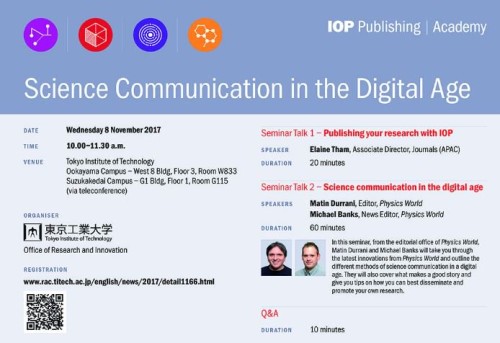Category Archives: Japan 2017
Applied physics and Japan’s ageing population
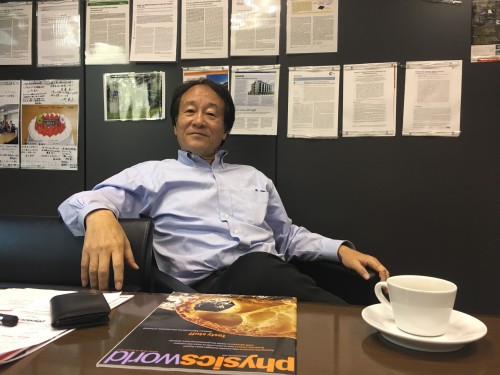
Keeping giong: Satoshi Kawata from Osaka University remains active despite having just officially retired. (Courtesy: Matin Durrani)
By Matin Durrani in Osaka, Japan
By most measures, Japan is one of the wealthiest nations in the world. Depending on which criterion you use, it’s either the third or fourth biggest economy on the planet. Much of that success is built on the country’s prowess in science and technology, which have supported numerous hi-tech giants of the corporate world.
Still, not everything is rosy in the Japanese garden. After the post-war boom years, the economy began to slump in the early 1990s and has picked up only slowly since then. To make matters worse, Japan has also had to contend with rising social-security costs to support an ageing population. Plummeting birth rates and steadily rising death ages mean that Japan’s population has fallen by just over 1% since 2010 to 126 million.
I was thinking about such matters yesterday as I walked through a shopping mall in central Osaka on my way to meet applied physicist Satoshi Kawata from the University of Osaka. Okay, it was a weekday lunchtime and this is just one data point, but there sure were lots of pensioners out shopping. I was also surprised to see a guy selling The Big Issue – the magazine that supports homeless people who want to make a living. I’d not seen any inkling of poverty in the country up to that point.
View all posts by this author | View this author's profile
When will Japan get its next physics Nobel prize?

Thirteen and counting: Hikaru Kawamura wonders when Japan will get its next Nobel Prize for Physics.
By Matin Durrani in Osaka, Japan
Hikaru Kawamura, president of the Physical Society of Japan (JPS), handed me a brochure as we sat down in his office on the fifth floor of the Department of Earth and Space Science at Osaka University. Inside it were photographs of the 13 Japanese physicists who have won the Nobel Prize for Physics.
It’s an impressive list of people, starting with Hideki Yukawa, who won the 1949 prize for his theory of the nuclear force, and going all the way up to Takaaki Kajita who shared the 2015 prize for detecting atmospheric neutrino oscillations at the Super-Kamiokande underground lab. (They’re all men, of course, but that’s another story.)
However, Kawamura admitted to me during our 90-minute discussion, that he is “not optimistic” that Japan will be as prolific in terms of Nobel prizes in the future. Most Nobel laureates usually (though admittedly not always) win their awards for work done 20-30 years ago. So with Japanese physics these days being, as Kawamura puts it, “not so popular as it used to be”, how long will Japan have to wait for its next physics Nobel prize?
View all posts by this author | View this author's profile
Riding around KAGRA

Tunnel vision: entry point to the KAGRA gravitational-wave observatory in Kamioka. (Courtesy: Michael Banks)
By Michael Banks in Kamioka, Japan
Of all the places I have been, I can’t remember being asked to ride a bicycle for 3 km down a dimly lit tunnel that had water dripping – sometimes pouring – from the ceiling.
But that’s what happened today when I visited the KAGRA gravitational-wave observatory in northern Japan.
Rising bright and early – a common occurrence this week thanks to jet lag – I took the Shinkansen from Tokyo to Toyama.
View all posts by this author | View this author's profile
Reforming Japanese science
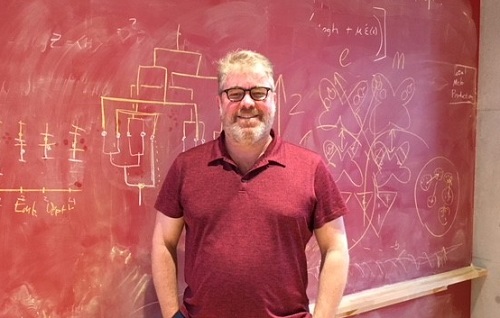
Making changes: John Hernlund.
By Michael Banks in Tokyo, Japan
Following this morning’s talk at the Tokyo Institute of Technology (as well as a mock earthquake evacuation drill that took place just afterwards), I took the opportunity to visit the Earth-Life Science Institute (ELSI), which is located in a neighbouring building at Tokyo Tech.
Like the Kavli Institute for the Physics and Mathematics of the Universe (IPMU), which I visited yesterday, ELSI is part of the World Premier International Research Center Initiative (WPI).
ELSI began in 2012 and has funding for 10 years from the WPI. There are around 100 people working there, the majority of whom are from outside Japan. Its main aim is to understand how life began on Earth and how that can be applied to the search for life on other planets. It covers a range of disciplines from astrophysics to microbiology.
View all posts by this author | View this author's profile
How to get your paper noticed
By Matin Durrani in Tokyo, Japan
For physicists, doing research is only the start of the game. With thousands of papers published each year, how do you make sure your latest work stands out from the crowd?
If you’re an established academic, your peers will already know who you are and, provided you can continue getting your papers published in the top journals, your career will carry on hitting the high notes . But if you’re less experienced in the research game, then a good dose of publicity in the mainstream media can give you a great head start – and thankfully the online world can help hugely.
That was the message of a seminar “Science communication in the digital age” given today at Tokyo Institute of Technology by me and my IOP Publishing colleagues Michael Banks (Physics World news editor) and Elaine Tham (associate director for Asia-Pacific). Attended by about 40 students, science communicators and university administrators, the seminar was opened by the president of Tokyo Tech Yoshinao Mishima.
View all posts by this author | View this author's profile
RIKEN celebrates its centenary
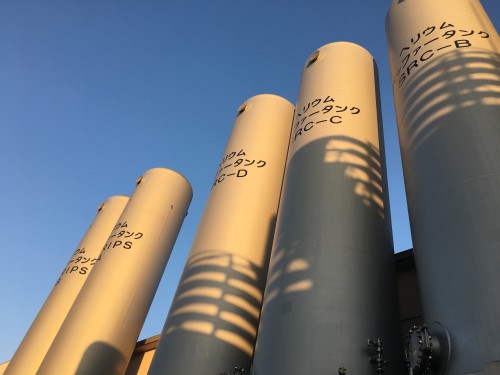
Cool stuff: these liquid-helium tanks are used to chill the superconducting magnets at RIKEN’s accelerators in its Radioactive Ion Beam Facility. (Courtesy: Matin Durrani)
By Matin Durrani in Wako, Japan
It’s funny where chance encounters can lead.
Earlier this year, I was at a reception for science journalists at the Fenway Park baseball stadium in Boston, US, when I bumped into Jens Wilkinson, who works in the communications team at RIKEN – one of Japan’s biggest research institutions. He encouraged me to visit the lab, which was founded 100 years ago, should I ever find myself in Japan.
And so here I was at RIKEN’s headquarters in Wako, just north of Tokyo, on day two of my trip to gather material for the upcoming Physics World special report on Japan. Wako is home to the largest of RIKEN’s seven campuses, which together employ almost 2000 researchers.
Apart from celebrating its centenary this year, which included an event in downtown Tokyo with none other than Emperor Akihito, RIKEN has been in the news for its discovery of element 113. Created at the RIKEN Nishina Center for Accelerator-Based Sciemce by smashing zinc nuclei into a bismuth target, the element was last year officially named “nihonium” (Nh).
View all posts by this author | View this author's profile
A decade of success

Looking forward: Hitoshi Murayama. (Courtesy: Kavli IPMU)
By Michael Banks in Tokyo, Japan
Just a couple of weeks ago the Kavli Institute for the Physics and Mathematics of the Universe (IPMU) marked its 10th anniversary.
Located on the University of Tokyo’s Kashiwa campus, the institute held a big celebration that was attended by hundreds of researchers including Nobel prize winners. The occasion was even marked by the creation of a bespoke sweet (see image below right).
View all posts by this author | View this author's profile
What’s next for superconductivity research?
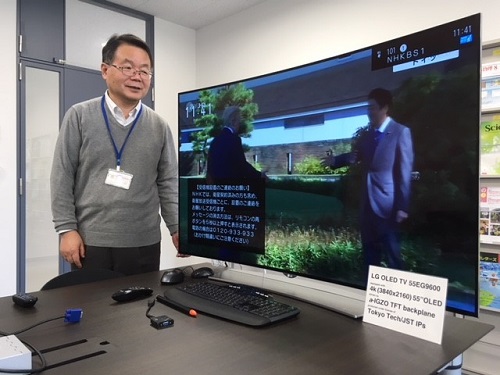
Seeing the bigger picture: Hideo Hosono from the Tokyo Institute of Technology. (Courtesy: Michael Banks)
By Michael Banks in Tokyo, Japan
This morning I took the train to the Tokyo Institute of Technology, which lies about 10 km south-west of Tokyo.
I met with Hideo Hosono who rose to fame almost a decade ago when he found a new class of superconductors known as iron pnictides.
In a 2008 paper, Hosono and colleagues discovered superconductivity in LaOFeAs at 26 K. The crystalline material comprises layers of lanthanum and oxygen sandwiched between layers of iron and arsenic — and is doped with fluoride ions.
View all posts by this author | View this author's profile
Why money is tight for Japanese science
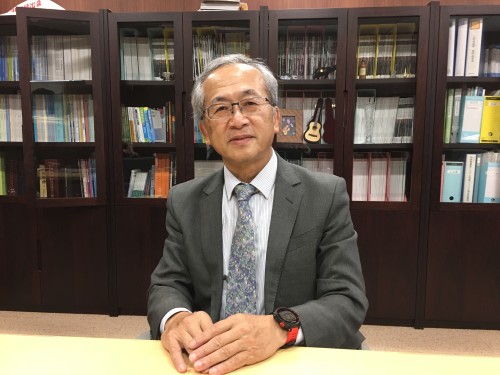
Money matters: Yasuhiro Iye is an executive director of the Japan Society for the Promotion of Science. (Courtesy: Matin Durrani)
By Matin Durrani in Tokyo, Japan
“Budget.”
That was the one-word answer from Yasuhiro Iye, when I asked him what was the most important thing on his mind as executive director of the Japan Society for the Promotion of Science (JSPS).
The society, which was founded in 1932, is responsible for funding researchers in Japan across all sectors of science, engineering and humanities. In 2015 the JSPS distributed about ¥260bn (about $2.27bn) in grants, which are awarded competitively through a rigorous peer-review process, with physicists receiving roughly 15% of the total.
It might sound a lot of money, but as Iye points out, the JSPS’s total budget has been pretty static in recent years. Money for science, Iye admits, is not as generous in Japan as in the past, which he blames on rising social-security costs to deal with the growing number of old people. “The Japanese government budget is constrained by the cost of an ageing society,” Iye says.
View all posts by this author | View this author's profile
Giving scientific advice in Japan

Sound advice: Tateo Arimoto
By Michael Banks in Tokyo, Japan
US President Donald Trump might be in Japan right now eating hamburgers and playing golf with the recently re-elected prime minister Shinzo Abe, but his presence didn’t stop me and Physics World editor Matin Durrani having our own high-level meeting as we began our week-long tour of the country.
After landing at Haneda airport in Tokyo, we headed straight to our downtown hotel for a meeting with Tateo Arimoto, who is director of science, technology and innovation at the National Graduate Institute for Policy Studies and a principal fellow of the Japan Science and Technology Agency (JST).
Over a light dinner of sushi, rice and vegetables, we had a wide-ranging and frank discussion about the role of scientific advice in Japan.
View all posts by this author | View this author's profile
